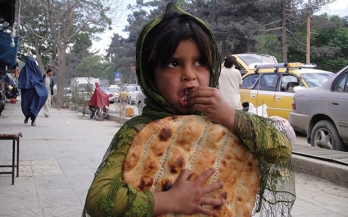- 01/08/2018
The aim of the survey was to provide data on household coverage and consumption of fortifiable and fortified foods among children and women of reproductive age, and availability and quality of fortified foods from markets in Pakistan.
- 01/02/2017
The purpose of the survey was to assess the household coverage and potential contribution of fortified foods to the micronutrient intake among women of reproductive age in two South African provinces: Gauteng and Eastern Cape.
- 01/06/2016
The purpose of the survey was to assess the household coverage and potential contribution of fortified foods to the micronutrient intake among women of reproductive age in Tanzania.
- 01/02/2017
The purpose of the survey was to assess the household coverage and potential contribution of fortified foods to the micronutrient intake among women of reproductive age in Uganda.
- 01/11/2017
This report presents the results of that assessment and proposes a Consumption Monitoring and Surveillance Framework consisting of the various processes, phases, components, and domains that provide an enabling environment for this to happen.
- 01/04/2017
The study analysed multiple program design options covering operational complexities, premix supply, the roles of private and public sectors, branding, marketing and advocacy, cost to consumer and quality assurance. This report presents the results of the various options evaluation and key conclusions drawn from the assessment.
- 01/06/2017
This report analyses the cost of fortification of wheat flour in Pakistan, Afghanistan and Kazakhstan, using both Afghan and regional harmonized standards; assesses its impact on market prices of wheat flour for a sustainable fortification program in Afghanistan; and makes recommendations on policy and pricing strategies for domestic and cross-border trade.
- 27/01/2015
This report examines previous large-scale fortification efforts in the Central Asian Republics to ascertain the lessons that can be learned from their successes and failures. The results of the report can help new initiatives ensure better coverage of fortified foods throughout the region including Afghanistan.
- 01/06/2017
This report underlines that in order to move the food fortification agenda forward in Afghanistan and create a supportive environment for action, stakeholders need to understand the impact of fortification, both in terms of health benefits and economic costs.
- 01/01/2017
Micronutrient malnutrition is a major public health problem in Kazakhstan. This Cost Benefit Analysis study looked at the cost-effectiveness of a single intervention, wheat flour fortification, in addressing micronutrient malnutrition.









